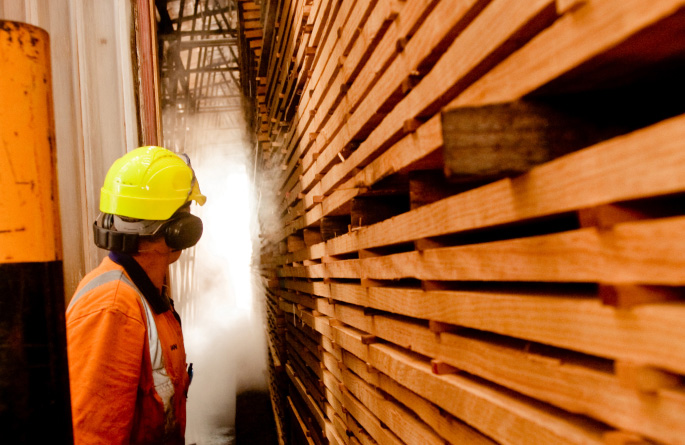- Overview
- ANZSIC codes
annual export earnings (updated Dec annually)
average workforce
in core production
manual sawmilling roles
What is the forestry and wood processing sector?
Forestry and wood processing includes silviculture, harvesting, sawmilling, wood product manufacturing, pulp and paper, furniture making and timber wholesaling.
This information expands on and interprets our data visualisation for all sectors, which can be filtered by sector and parts of it, like processing or production.
How many work in forestry and wood processing?
Data for year ending 31 March 2023.
| Designation | Count |
|---|---|
| Core production | 12,317 |
| Core processing/manufacturing | 11,325 |
| Strongly connected | 18,808 |
| Relevant | 199 |
| Total | 42,607 |
Designation workforce counts won't necessarily sum to the total - some people may work in more than one designation. The total indicates the overall unique average number of people who work in the sector.
Seasonal change: Workforce over a year
Our data visualisations show average workforce counts across a year for the forestry and wood sector:
Role and skill levels
MPI and NZIER's report 'The food and fibre workforce: Data on its size and composition' from June 2022 sets out the proportion of managers, semi-autonomous and managed staff in the forestry and wood sector.
Forestry core production
The bulk of the workforce are managed silviculture workers. Many managers are small wood lot owners.
Forestry core processing/manufacturing
Log sawmilling, wood chipping, and timber resawing and dressing
Firms in log sawmilling tend to employ many or few people. Most employees are in manual sawmill roles. The rest are machine operators, technical staff and sawmill managers.
Pulp, paper and paperboard
Pulp, paper and paperboard manufacturing includes making bulk paper or pulp from any fibre. It's mostly large-scale production, with smaller companies producing low volume, often for specialist niches.
Most pulp, paper and fibre manual workers have some autonomy because operating equipment needs experience.
The sector reports a high number of managers. One industry expert suggests 'job title inflation', so on industry advice, we adjusted our estimates, which now show over half pulp, paper and fibre employees are semi-autonomous.
Wood processing
Wood processing includes solid wood processing, wood panels and remanufacturing. Nearly half of wood processing workers are managed.
